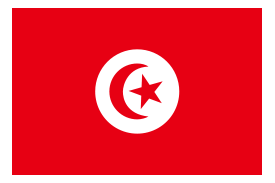Language/Tunisian-arabic/Vocabulary/Health
Hi Tunisian Arabic learners! 😊
In this lesson, we will learn how to talk about health in Tunisian Arabic. Maintaining good health is very important, and knowing how to express your symptoms will help you receive the care you need. We will also learn about some cultural practices related to health in Tunisia. Let's get started!
Don't forget, to improve your Tunisian Arabic Vocabulary, you can also use the Polyglot Club website. Find native speakers and ask them any questions!
Essentials[edit | edit source]
Here are some essential words and phrases to know when speaking about health in Tunisian Arabic:
| Tunisian Arabic | Pronunciation | English |
|---|---|---|
| نحسّ | naḥs | feel ill |
| ألم | alam | pain |
| سعال | sʕal | cough |
| حرارة | ḥrarra | fever |
| صداع | ṣdāʿ | headache |
| برد | bard | cold |
| دواء | dawā | medicine |
| طبيب | ṭbīb | doctor |
Now, let's use these words in context:
- Person 1: نحسّ في معدتي. (I feel sick to my stomach.)
- Person 2: شربي شاي بالنعناع، راح يساعدك. (Drink some mint tea, it will help you.)
- Person 1: عندي ألم في رأسي و سعال. (I have a headache and a cough.)
- Person 2: خدي دواء و استرحي، بتتحسني. (Take some medicine and rest, you'll feel better.)
Symptoms[edit | edit source]
Here are some common symptoms you may experience when you're not feeling well, and how to talk about them in Tunisian Arabic:
| Tunisian Arabic | Pronunciation | English |
|---|---|---|
| أرهقني الجهد البدني. | ʾarahqnnī l-jhd l-bdny. | I feel physically exhausted. |
| عندي انتفاخ في بطني. | ʿndi ntfaẖ fī bṭnī. | I have bloating in my stomach. |
| تقيأت. | tqyʾt. | I vomited. |
| عندي صداع حاد. | ʿndi ṣdāʿ ḥād. | I have a severe headache. |
| دمي كثير. | dmī kthīr. | I am bleeding heavily. |
Let's use these words in a dialogue:
- Person 1: عندي أرهقني الجهد البدني. (I feel physically exhausted.)
- Person 2: اركن و اشرب كأس ماء. (Sit down and drink a glass of water.)
- Person 1: تقيأت، ما يلزمني طبيب؟ (I vomited, do I need to see a doctor?)
- Person 2: شوف علاش تحس بالتقيؤ. ربما ضرس أو دوار. (See why you feel nauseous. Maybe it's a toothache or dizziness.)
- Person 1: عندي دمي كثير، شوفولي طبيب يرافقني. (I am bleeding heavily, find me a doctor to accompany me.)
Cultural Information[edit | edit source]
In Tunisia, people have various traditional remedies for common health issues. Here are some examples:
- الشمّة (a sniff) - In Tunisia, it is common to inhale certain herbs or plant essence to cure headaches, dizziness, or nausea. For example, if someone has a headache, they might put a few drops of rose or lavender oil on a handkerchief, and inhale it.
- حجامة (cupping therapy) - A traditional Tunisian treatment that helps to promote blood flow, relieve muscle tension, and reduce swelling. A hollow cup is placed on the skin or flesh, and a vacuum is created to suck the skin up into the cup.
- علاج بالماء (hydrotherapy) - Immersing oneself in hot or cold water is believed to have a healing effect. People in Tunisia use hot or cold water to relieve various health issues, such as muscle pain and cramps.
Conclusion[edit | edit source]
In this lesson, we learned some essential words and phrases for talking about health in Tunisian Arabic, and explored some cultural practices related to health in Tunisia. Remember to take care of your health, and seek medical attention when necessary. We hope these new words and phrases will help you communicate your symptoms more effectively. Keep practicing, and don't forget to check out Tunisian Arabic Vocabulary for more useful words and phrases!
➡ If you have any questions, please ask them in the comments section below.
➡ Feel free to edit this wiki page if you think it can be improved. 😎
Having concluded this lesson, consider checking out these related pages: Basic Greetings and Introductions & Animal.

